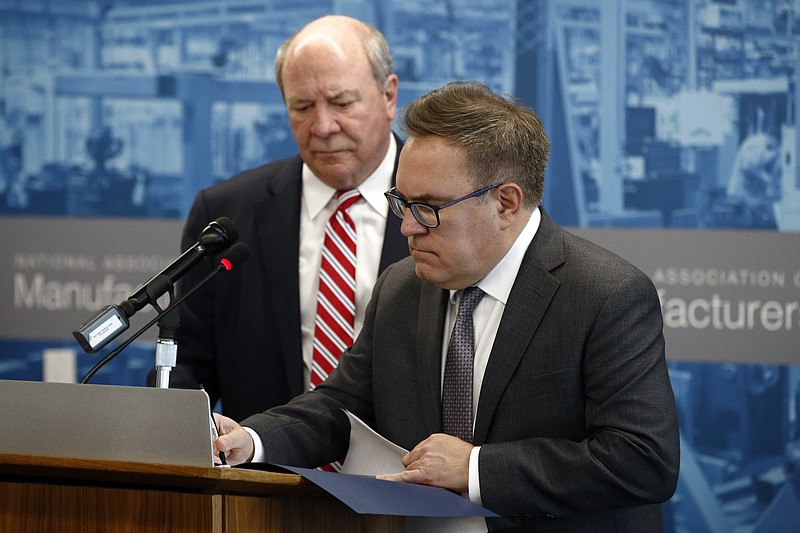On Sept. 12th, Environmental Protection Agency chief, Andrew Wheeler, announced revocation of Obama-era regulations that dealt with water quality. Obama's 2015 Waters of the United States measure had extended federal protection of water quality to wetlands, ponds, and headwaters of larger streams and rivers. Wheeler described the 2015 regulation as "an egregious power grab."
Until the 1970s, the federal government largely ignored water quality. Antiquated regulations posed no barrier to dumping sewage and toxic materials into waterways. That changed in the aftermath of a June 22, 1969, fire that erupted in oil slicks on the Cuyahoga River in Cleveland, Ohio. Other river-front communities became aware of harmful chemicals in their water supplies. A national movement grew and pressed for congressional action.
In 1972, Congress ratified and President Richard Nixon signed the Clean Water Act, the first, major piece of environmental legislation in our history. The law set minimum standards for what could be discharged into public and navigable waterways by municipalities, businesses, and manufacturers. A 1977 amendment placed tighter limits on discharge of raw sewage and industrial wastes into waterways. Federal grants funded construction and upgrades of municipal, sewage treatment plants. Enforcement of the law rested with the EPA and the U.S. Army Corps of Engineering.
The Safe Drinking Water Act of 1974 set standards for every public water system in the U.S. and gave the EPA authority to set safe levels for micro-organisms, chemicals, and radioactive materials.
Neither the Clean Water Act nor the Safe Drinking Water Act addressed runoff of chemicals from farmlands and ranches or the overflow of sewage systems in times of floods, though these discharges are a major source of water contamination.
Landowners and real estate developers, claiming infringement of their rights, wanted to keep it that way. State and local authorities, prodded by lobbyists, sought control of regulations and their enforcement. A variety of lawsuits challenged the authority of EPA's enforcement, and the U.S. Supreme Court issued conflicting opinions in 2006.
In 2011, the EPA and Corps of Engineers proposed new guidelines that evolved into an executive order known as the Clean Waters of the U.S. The new order defined waterways subject to federal regulation, extending coverage to wetlands and headwaters of streams and rivers. Also covered were channels that filled only during times of heavy rain.
Wetlands include bogs, marshes, swamps and ponds. They serve as wild-life habitats. Bacteria in wetlands break down contaminants. Wetlands filter sediments and improve water quality downstream. Coastal wetlands can mitigate flooding and blunt the force of hurricanes.
The new order recognized that fresh waters could not be arbitrarily separated into large versus small streams. Each waterway had to viewed as a unified whole, reaching from its remote origin in wetlands to the full flow of a river. Guidelines for protecting water were based upon scientific studies, interagency reviews, and economic analysis.
Then things began to change.
On Feb. 16, 2017, Congress passed and President Donald Trump signed House Joint Resolution 38 which excluded wastes related to coal mining from federal regulation of water quality.
In January 2018, EPA suspended enforcement of 2011 Clean Water wetlands executive order.
Regulation of air and water quality cannot be ceded to individual states and localities. One state's action to drain a wetland will affect water flow and quality downstream, extending into other states. Toxic substances dumped in the headwaters of a river system in one state will quickly affect water quality and safety for everyone who depends upon that water.
The National Resource Defense Council and other environmental organizations will challenge in the courts the repeal of the Clean Water and wetlands executive order.
Wetlands and the rivers and streams that originate from them form over thousands of years. They can be destroyed in the short term by edicts from an administration more interested in monetary profits than the health of the environment and the people who depend upon it.
Contact Clif Cleaveland at ccleaveland@timesfreepress.com.

